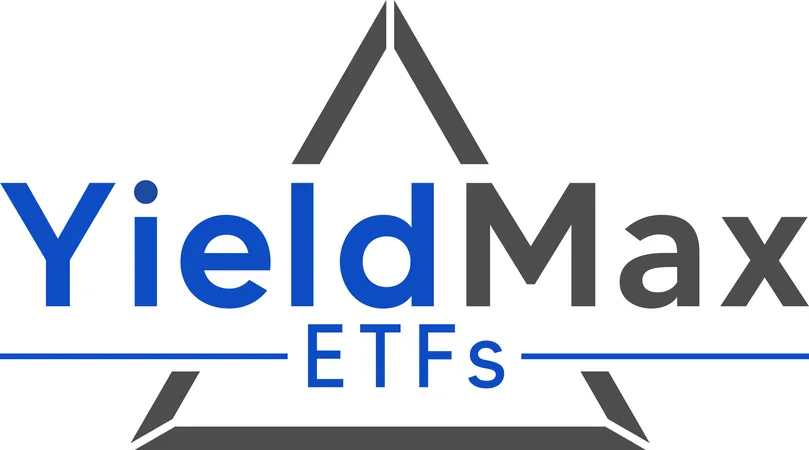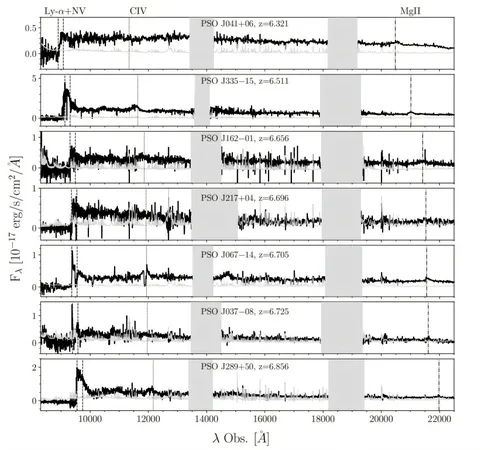
Netflix Supercharges Metaflow with Game-Changing Configuration Features!
2025-01-10
Author: Emma
Netflix Introduces Config Object for Metaflow
Netflix has just unveiled a groundbreaking upgrade to its Metaflow machine learning infrastructure that is set to revolutionize how machine learning (ML) workflows are managed: the introduction of a new Config object. This powerful addition tackles a pressing challenge faced by Netflix's numerous teams, who handle an impressive array of Metaflow flows across various ML and AI applications.
Metaflow is Netflix's open-source data science framework designed to streamline the creation and management of deep, data-intensive workflows. Through a visual representation of workflows as directed graphs, Metaflow simplifies the iteration and visualization processes for users. Moreover, it adeptly manages the scaling, versioning, and deployment of these workflows, which are crucial for success in machine learning and data engineering initiatives. With integrated support for data storage, parameter management, and computation execution—whether locally or in the cloud—Metaflow has become an essential tool for data scientists.
Revolutionizing Workflow Configuration
The newly introduced Config feature marks a pivotal change in how ML workflows at Netflix can be configured and managed. While Metaflow has consistently excelled at providing infrastructure for data access, resource computation, and workflow orchestration, teams previously operated without a cohesive method for configuring behavior within flows, especially regarding decorators and deployment parameters.
The Config object is complementary to Metaflow's established constructs of artifacts and parameters. However, the critical distinction lies in when these configurations are resolved. Artifacts are saved at the completion of each task, and parameters are calculated at the beginning of a run, while configs are determined during flow deployment. This unique timing empowers teams to implement deployment-specific configurations that better suit their needs.
User-Friendly Configuration Management
One of the standout features of the new Config object is its user-friendly approach. Configurations can be specified using intuitive TOML files, allowing teams to manage various aspects of a flow efficiently. For instance: ```toml [schedule] cron = "0 * * * *" [model] optimizer = "adam" learning_rate = 0.5 [resources] cpu = 1 ```
An exemplary illustration of Metaflow's powerful configuration system is Netflix’s own internal tool, Metaboost. This unified interface expertly manages ETL workflows, ML pipelines, and data warehouse tables. The new Config feature enhances Metaboost by allowing teams to create experimental configurations while retaining the flow's core structure intact.
For ML practitioners, this means they can easily create model variations simply by swapping configuration files, enabling rapid experimentation with features, hyperparameters, or target metrics. This capability has shown extraordinary benefits for Netflix’s Content ML team, which deals with hundreds of data columns and an array of metrics.
Benefits of the New Config System
The Config system offers several notable advantages to streamline operations:
- **Flexible Runtime Configuration**: Teams can combine Parameters and Config objects to create a balanced approach for fixed and runtime configurations.
- **Enhanced Validation**: Custom parsers can validate configs, integrating seamlessly with prevalent tools like Pydantic.
- **Advanced Configuration Management**: It supports tools like OmegaConf and Hydra, facilitating sophisticated configuration hierarchies.
- **On-the-Fly Generation**: Users can fetch Configs from external services or assess execution environments (like the current GIT branch) to enrich context during runs.
This enhancement is not just a minor update; it represents a significant advancement in Metaflow's journey as an essential machine learning infrastructure platform. By establishing a more structured approach to configuration management, Netflix empowers its teams to easily maintain and scale ML workflows while aligning with specific development practices and business objectives.
The newly released feature is available starting with Metaflow 2.13, allowing users to integrate this functionality into their workflows without delay.
Other Tools in the ML Landscape
While Netflix Metaflow improves how data scientists and engineers manage workflows, it’s essential to note the other prominent tools available in the market. Each of them serves slightly different purposes while aiming to simplify complex workflows and improve data operations. Here are some strong contenders:
1. **Apache Airflow**: An extensively used open-source platform that orchestrates workflows through Directed Acyclic Graphs (DAGs), focusing on a more general-purpose approach. 2. **Luigi (Spotify)**: An open-source Python framework that creates complex pipelines, but with a reduced focus on machine learning-specific requirements. 3. **Kubeflow**: A comprehensive machine learning toolkit for Kubernetes, designed to manage ML workflows and deploy models in production effectively. 4. **MLflow**: Another robust open-source platform that governs the ML lifecycle, but which lacks some of the broader orchestration capabilities found in Metaflow. 5. **Argo Workflows**: A Kubernetes-native engine that executes complex workflows on containerized infrastructures, tailored for teams already utilizing Kubernetes.
While alternatives like Airflow and Kubeflow offer varied functionalities, Metaflow differentiates itself by emphasizing simplicity, scalability, and its built-in support specifically tailored for machine learning workflows, cementing its position as a top choice for data science teams everywhere.









 Brasil (PT)
Brasil (PT)
 Canada (EN)
Canada (EN)
 Chile (ES)
Chile (ES)
 Česko (CS)
Česko (CS)
 대한민국 (KO)
대한민국 (KO)
 España (ES)
España (ES)
 France (FR)
France (FR)
 Hong Kong (EN)
Hong Kong (EN)
 Italia (IT)
Italia (IT)
 日本 (JA)
日本 (JA)
 Magyarország (HU)
Magyarország (HU)
 Norge (NO)
Norge (NO)
 Polska (PL)
Polska (PL)
 Schweiz (DE)
Schweiz (DE)
 Singapore (EN)
Singapore (EN)
 Sverige (SV)
Sverige (SV)
 Suomi (FI)
Suomi (FI)
 Türkiye (TR)
Türkiye (TR)
 الإمارات العربية المتحدة (AR)
الإمارات العربية المتحدة (AR)